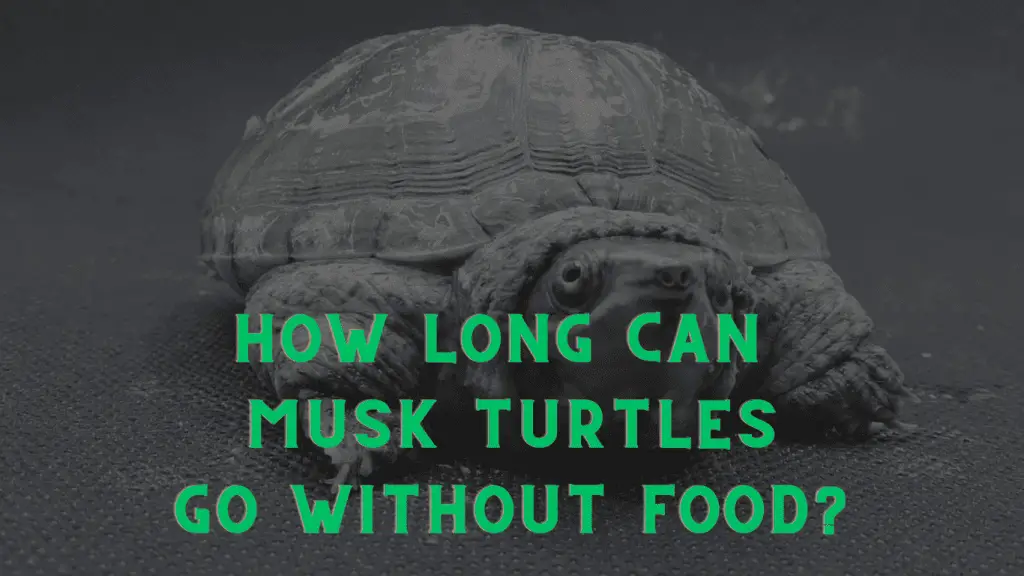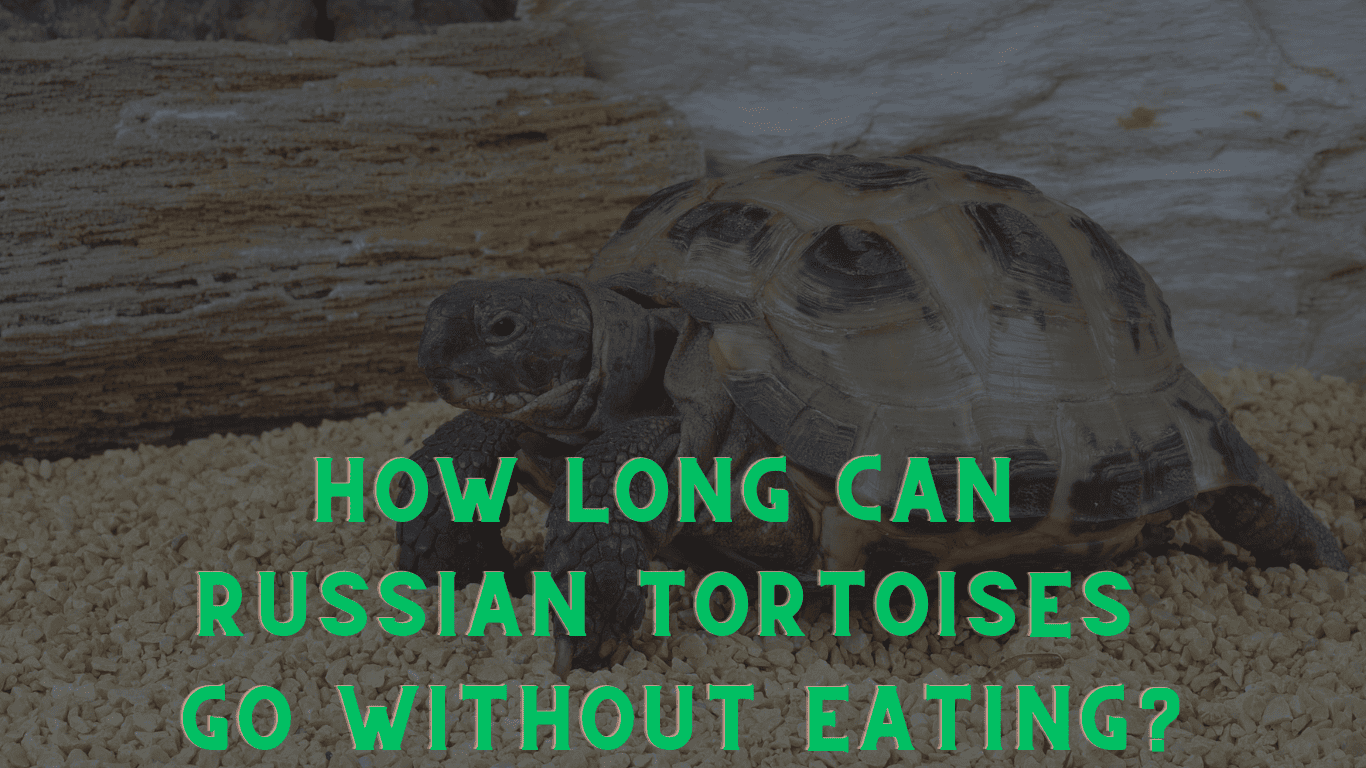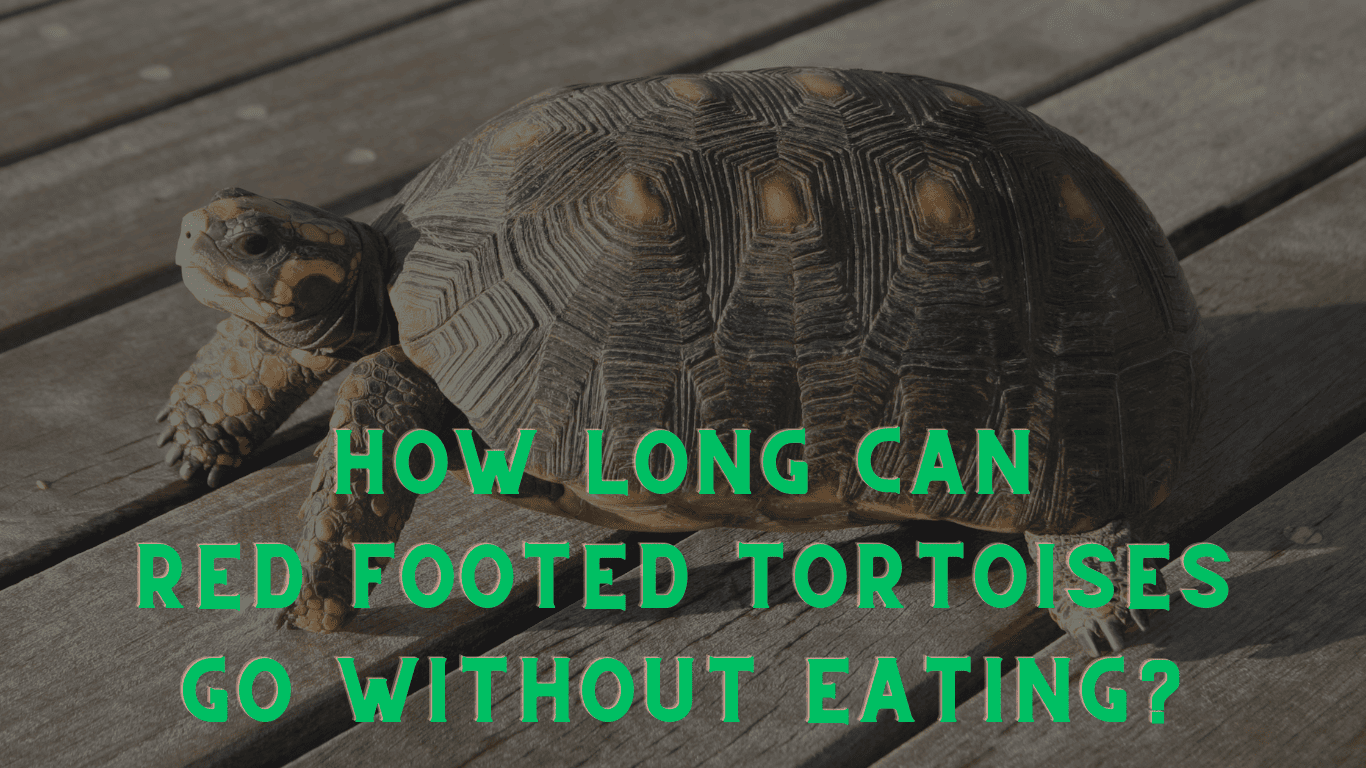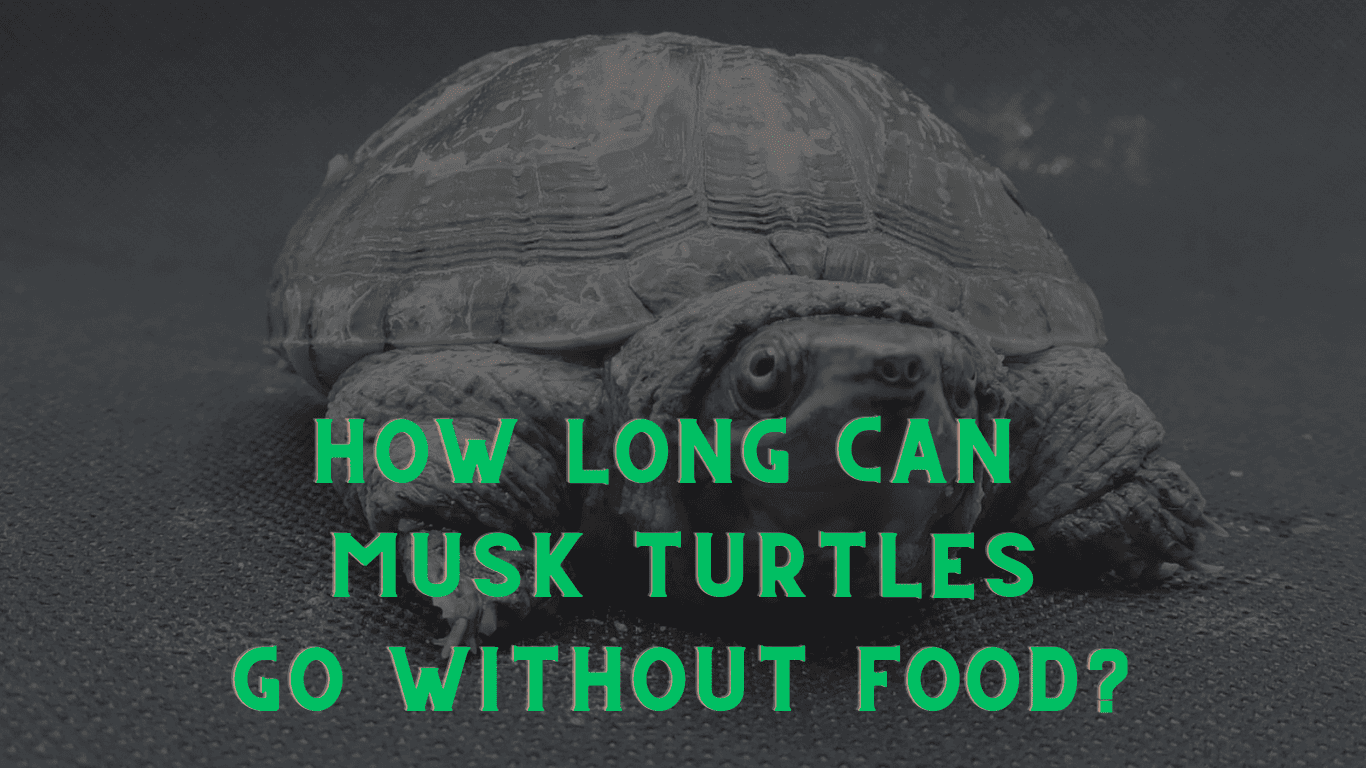Musk turtles, under ideal conditions, can typically survive for an approximate period of 90 days, or three months, without food intake. However, this survival period can be influenced by several factors, such as the turtle’s age, size, and overall state of health. It is crucial to understand that while an adult turtle can go without food for a few weeks, it is inadvisable to subject them to extended periods of starvation.
Particularly in the case of juvenile or baby turtles’ nutritional needs are significantly greater, reducing their ability to survive without food compared to adult turtles. Even during periods of fasting, turtles continue to lose body weight, further highlighting the importance of regular and suitable feeding.
Regardless of their feeding status, turtles must consistently have access to fresh water and appropriate lighting conditions. Regular feeding is critical for their survival and overall well-being and health.
| Species Information | Musk turtles are small aquatic turtles from the family Kinosternidae. They have a distinctive dark brown or black carapace with yellow stripes on their head and neck. They are also known as stinkpots due to their ability to release a strong musky odor when threatened. |
| Behavior | Musk turtles are nocturnal and shy, spending most of their time in the water. They’re not very social and may become stressed if handled too much. They’re known for their opportunistic feeding habits and can go for weeks without eating. |
| Diet | Musk turtles are omnivores. They feed on aquatic plants, insects, small fish, and crustaceans in the wild. A well-balanced diet for a pet musk turtle includes insects, small fish, shrimp, crustaceans, and aquatic plants. It is supplemented with commercial turtle pellets, fruits, vegetables, mushrooms, and dried insects. They can also survive without food for up to three months. |
| Housing and Care | Juvenile musk turtles should be fed every day or every other day. Adult musk turtles can be fed every other day. The feeding amount should be so they can consume in about 15-20 minutes. Overfeeding can lead to health problems. |
| Feeding Frequency | Musk turtles can survive without food for up to three months. Preparing the tank, ensuring water quality, considering an automatic feeder or a pet sitter, and leaving clear care instructions are crucial when going on vacation. |
| Effects of Starvation | Starvation can affect a musk turtle’s growth, energy levels, fat storage, metabolism, and immune system, leading to serious health problems and even death. |
| Hibernation | During winter, some musk turtles may hibernate to conserve energy. This requires a large body of water with a temperature between 40-50°F. They may not eat for several months during this period. |
| Vacation Care | Musk turtles can survive without food for up to three months. When going on vacation, preparing the tank, ensuring water quality, considering an automatic feeder or a pet sitter, and leaving clear care instructions are crucial. |
| Commitment | Musk turtles can live up to 50 years, so owning one requires a long-term commitment. They need a suitable environment, regular feeding, and veterinary care. Despite the commitment, owning a musk turtle can be a rewarding experience. |
An Overview of Musk Turtles

Musk turtles are small aquatic turtles that belong to the family Kinosternidae. They are also known as stinkpots due to their ability to release a strong musky odor when threatened. The common musk turtle is the most popular species kept as a pet, but there are other species, such as the eastern musk turtle.
Musk turtles have a distinctive appearance, with a dark brown or black carapace and yellow stripes on their head and neck. They are nocturnal and have a shy temperament, preferring to spend most of their time in the water. They are not active swimmers and prefer walking along the bottom of their enclosure.
Regarding handling, musk turtles are not the best choice for beginners. They are not very social and can become stressed if handled too much. If you need to handle your musk turtle, do so gently and support its entire body.
In terms of behavior, musk turtles are known for their opportunistic feeding habits. They will eat almost anything they can get their hands on, including insects, worms, and small fish.
They can also go for weeks without eating, making them well-suited for owners who may need to leave them alone for a few days. However, it is important to provide them with a balanced diet to ensure their health and well-being.
Musk Turtle’s Diet
Musk turtles are omnivores with varied diets, including plants and animals. A well-balanced diet is essential to keep your pet musk turtle healthy and happy. This section will discuss the natural and supplement diets of musk turtles.
Natural Diet
In the wild, musk turtles feed on various aquatic plants, insects, small fish, and crustaceans. They have a preference for animal-based foods, but they also consume a significant amount of plant material. A natural diet is always the best option for your pet musk turtle.
If you want to provide your musk turtle with a natural diet, you can feed them the following:
- Insects like crickets, mealworms, and waxworms
- Small fish like guppies, minnows, and goldfish
- Shrimp and other crustaceans
- Aquatic plants like duckweed, water hyacinth, and water lettuce
Supplement Diet
If you cannot provide your musk turtle with a natural diet, you can supplement their diet with commercial turtle pellets. These pellets are specially formulated to provide a balanced diet for your pet musk turtle.
When choosing pellets, look for those that contain a high percentage of protein and calcium. Protein is essential for muscle and tissue growth, while calcium is necessary for bone development and shell health.
In addition to pellets, you can also supplement your musk turtle’s diet with the following:
- Fruits like bananas and orange
- Vegetables like carrots, corn, beets, and squash
- Mushrooms
- Dried insects
It is important to note that supplements should not replace a natural diet entirely. A varied diet is essential to ensure your pet musk turtle receives all the necessary nutrients for optimal health.
Feeding Frequency and Quantity
When it comes to feeding musk turtles, it’s important to balance providing them with enough food and not overfeeding them. The frequency and quantity of food will vary depending on the age and size of the turtle.
Feeding Juvenile Turtles
Juvenile musk turtles should be fed more frequently than adult turtles. They require more protein to support their growth and development. A good rule of thumb is to feed them every day or every other day.
It’s important not to overfeed them, as this can lead to health problems such as obesity and shell deformities. A juvenile musk turtle should be fed an amount of food that they can consume in about 15-20 minutes.
Feeding Adult Turtles
Adult musk turtles require less protein than juvenile turtles so they can be fed less frequently. Feeding them every other day is usually sufficient.
It’s also important not to overfeed adult turtles, as this can lead to health problems. An adult musk turtle should be fed an amount of food they can consume in about 15-20 minutes.
Generally, it’s better to underfeed than overfeed musk turtles. They can go for extended periods without food, so it’s better to err on the side of caution. If you’re unsure how much to feed your musk turtle, consult a veterinarian or a knowledgeable turtle owner.
Effects of Starvation
Musk turtles can survive for a considerable amount of time without food, but it is not recommended to starve them intentionally. Starvation can have various effects on the turtle’s health and well-being.
Without Eating: Musk turtles, like most turtles, can survive for a long time without eating. However, it is essential to keep in mind that they still require a balanced and nutritious diet to maintain their health.
Growth: Lack of food can affect the growth of a musk turtle. Younger turtles that are still growing might experience stunted growth if they are not given enough food.
Energy: Starvation can cause a decrease in energy levels in musk turtles. They may become lethargic, inactive, and less responsive.
Fat: When a musk turtle is starved, its body will begin to use up its fat stores for energy. However, if the turtle is not given food soon enough, it may start to break down its muscle tissue for energy instead.
Health Problems: Starvation can lead to health problems in musk turtles, such as weakened immune systems, organ failure, and even death.
Metabolism: When a musk turtle is starved, its metabolism slows down to conserve energy. This can make it harder for the turtle to digest food when it is finally given to them, leading to further health problems.
Immunity: A lack of food can weaken a musk turtle’s immune system, making it more susceptible to diseases and infections.
Musk Turtles in Captivity
Musk turtles are popular pets due to their small size and easy care requirements. However, it’s important to provide them with the right tank setup, temperature and lighting, and handling and care to ensure their health and happiness in captivity.
Tank Setup
When it comes to setting up a tank for your musk turtle, there are a few important things to consider. First, make sure the tank is large enough for your turtle to move around comfortably. A good rule of thumb is to have at least 10 gallons of water per inch of shell length.
Next, choose a substrate that is easy to clean and won’t cause any harm to your turtle. Gravel or sand can be dangerous if ingested, so opt for a smooth river rock or bare bottom tank instead.
Provide your turtle with plenty of hiding spots and basking areas. A basking spot with a heat lamp should be provided to allow your turtle to regulate its body temperature.
Temperature and Lighting
Musk turtles require a water temperature of 75-80°F and an air temperature of 75-85°F. A submersible aquarium heater can help regulate the water temperature, while a heat lamp can be used to provide warmth and light for your turtle.
UVB lighting is also important for musk turtles to help them metabolize calcium and produce vitamin D3. Make sure to provide a UVB bulb that is appropriate for the size of your tank and replace it every 6-12 months.
Handling and Care
Musk turtles are generally not as social as other turtle species and may not enjoy being handled. However, it’s important to handle them occasionally to check for any signs of illness or injury.
Make sure to keep the tank clean by performing regular water changes and removing any uneaten food or waste. A balanced diet of commercial turtle pellets, insects, and leafy greens should also be provided to ensure your turtle gets all the necessary nutrients.
Musk Turtles and Hibernation
Musk turtles are cold-blooded reptiles that require access to water to regulate their body temperature. During the winter months, musk turtles enter a state of dormancy known as hibernation or brumation.
Hibernation is a natural process that allows musk turtles to conserve energy during the colder months when food is scarce. During this time, their metabolic rate slows down, and they become less active.
It is important to note that not all musk turtles hibernate. The decision to hibernate depends on their geographical range and the availability of food and water. Turtles that are originally from temperate climates generally hibernate, while those from warmer climates may not.
If you have a pet musk turtle, it is important to provide them with a suitable environment for hibernation. This includes access to a large body of water with a temperature between 40-50°F. It is also recommended to gradually decrease the water temperature over a period of several weeks to mimic the natural cooling of the environment.
During hibernation, musk turtles may not eat for several months. It is important to ensure that they have enough fat reserves to sustain them during this time. It is not recommended to disturb a hibernating musk turtle, as this can cause them to wake up prematurely and use up valuable energy reserves.
In conclusion, musk turtles are cold-blooded reptiles that may hibernate during the winter months. Providing them with access to water and a suitable environment for hibernation is crucial for their survival.
Musk Turtles When You’re On Vacation
If you’re planning to go on vacation and you’re wondering how long your musk turtle can go without food, the good news is that musk turtles can survive for up to three months (90 days) without food. However, it’s important to note that this duration can vary depending on factors such as age, size, environment, and prior diet.
Before you leave for vacation, properly preparing your musk turtle’s habitat is essential. Ensure that the tank is clean and that the water quality is optimal. You can also consider installing an automatic feeder to dispense food regularly. However, it’s crucial to test the feeder before leaving to ensure it works correctly.
It’s also essential to ensure that your musk turtle has access to clean water while you’re away. Consider investing in a water filtration system that will keep the water clean and fresh. If you’re going to be away for an extended period, you can also consider hiring a pet sitter or asking a friend or family member to check on your musk turtle periodically.
Before leaving for vacation, it’s crucial to ensure that you leave clear instructions on how to care for your musk turtle. This should include information on feeding, water changes, and any other care requirements. It’s also essential to provide emergency contact information in case of any issues.




Leave a Reply